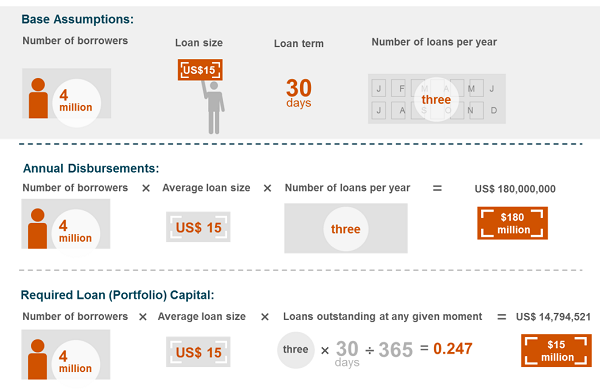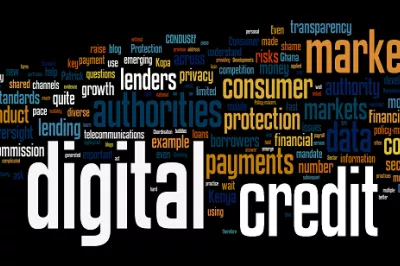The Unusual Financial Dynamics of Short-Tenor Digital Credit
We are beginning to see a proliferation of new digital credit models being tested globally. New services are popping up every few weeks. I was at an event in New Delhi hosted by USAID and the Government of India where they announced four small-scale pilot tests launched just in the previous few weeks.
Characteristics of digital credit, as proposed in an earlier blog, are instant processes, automated decisions and transactions delivered remotely. Much attention has been given to how digital credit products could reach very large scale in a short amount of time, skipping past the need for a brick-and-mortar presence.
What is less discussed are the peculiar financial dynamics of credit that is rapidly disbursed and recovered in short windows of time, often 30 days or less. What can make it even more peculiar is that the amounts are often much smaller than conventional credit or even micro-lending. Many of the deployments underway are extending credit in initial amounts of $5, $10 or $15. This can be 10-20 times smaller than the amount available in the same countries for microloans.
We wondered how the financial dynamics might be different. So CGAP built a basic Excel-based financial model for a digital credit product. When plugging in some standard common numbers for loan size, number of borrowers, tenor and other details, we began to see some of the basic financial dynamics of loan portfolios made up of short-term, very small loans.
Here are some high-level learnings:
- Economies of scale still matter. Although costs of brick-and-mortar branches can be removed, there remain other fixed costs such as a loan portfolio management system, credit relationship management systems and credit scoring. These are real costs that can primarily be covered through economies of scale. Given the very small loan sizes, the scale required is often in the hundreds of thousands if not millions of borrowers. So small scale is good for piloting, but significantly more scale is required to recover fixed costs.
- The amount of capital required is surprisingly low, even to acquire a large number of borrowers. Small loans are the obvious primary cause of this. But what is more nuanced is that the short-term nature of the loans, repaid often in 30 days or less, means that there is even less balance sheet capital required. Capital is repaid quickly and available to be redeployed quickly. For example, consider a loan program that has grown to 4 million borrowing clients. These clients borrow $15 each time for about 30 days at a time. And each borrower borrows three times each year. By this numerical example:

- The small initial capital means it is not a big investment to acquire a large number of customers. It requires relatively little capital to build a product relationship with a large number of customers ($15 million for 4 million customers, in our example). The bank that figures this out, as Commercial Bank of Africa did in Kenya with the M-Shwari, can make a large jump in market share. However, the ability of banks to deploy large amounts of capital to this customer segment may also be limited. The rationale is much more to acquire customers and a bit less on a place to allocate a lot of capital.
- There is also very little time required to build up a credit history. Because loans are repaid so quickly, building credit scoring algorithms can happen much faster. Whereas loan defaults on a one-year loan might take 13-18 months to first appear (and even longer to evaluate), short-term digital credit products begin to show delinquency numbers even after the first 30-60 days. This provides quick feedback on lending performance that allows rapid iterations of credit scoring models.
The implications for small startups and large financial institutions are quite different. For startups, the push to build product profitability will require rapidly scaling and raising capital quickly. For large banks the logic likely might be very different. With a small amount of capital, they can acquire a very large new customer base using this as a low-cost customer acquisition tool that can transition the newly acquired clients into a wider range of suitable services and products.
Understanding these financial dynamics is one of the keys for determining when, if and how to use new kinds of digital credit approaches.




Comments
The asset for these
The asset for these organizations is the credit history data that is collected on 4million users. This can be fed into organizations that is targeting the same customers for bigger loans with longer tenors. Unique identification could be used as the sole credit approval criteria which will reduce the costs further. I am still surprised at the rates that are charged on these loans, ideally these should be serviced at interest rates standard consumers pays at a commercial bank.
With respect Sir, you are
With respect Sir, you are much correct that the asset for these organizations is the data on the 4 million users, but the value is not from customer lending. Data will be sold to other companies.
Add new comment